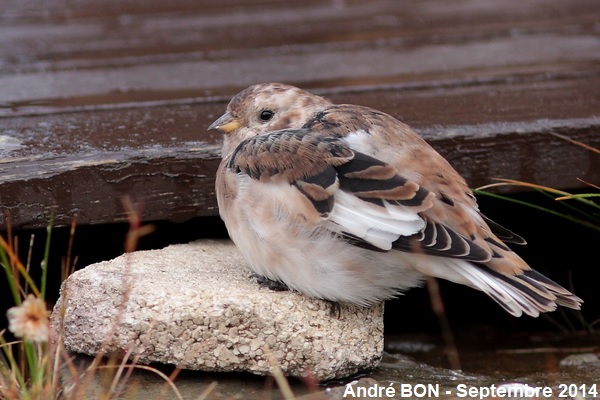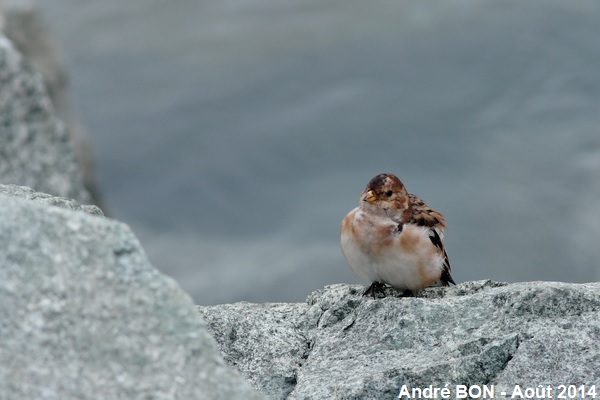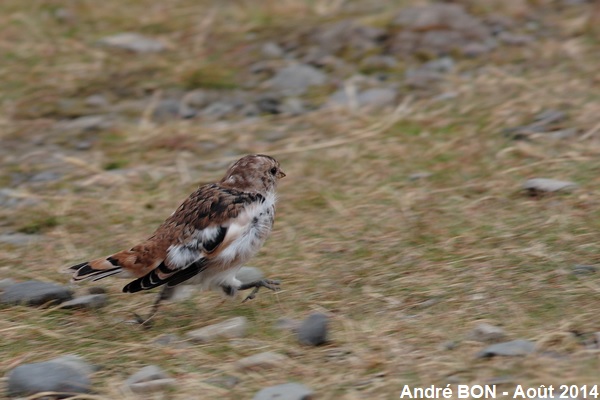


| Snow Bunting (Plectrophenax nivalis (Linnaeus, 1758)) |



|
|
Scientific name: Plectrophenax nivalis (Linnaeus, 1758) Common name: Snow Bunting French name: Bruant des neiges, Plectrophane des neiges Order: Passeriformes Family: Calcariidae Size: Body size: 15 to 18cm; Weight: 26 to 43g; Wingspan: 28 to 38 cm. Habitat: Rocky areas on the sea coasts, in mountains or in the tundra. Food: Seeds and insects. Nesting: The nest is built on the ground between stones or in the hollow of a rock. There are four to six eggs per clutch. Migration: Snow Buntings fly southwards to winter on the coasts of Scandinavia, Great Britain or sometimes further south on the coasts of France. Other populations winter in the plains of Central Europe. There is a sedentary population in Iceland. Populations of North America winter in Canada or in the United States, Asian populations winter in Central Asia. Geographic area: Arctic regions surrounding the North Pole. |
Male Snow Bunting in breeding plumage have white head, neck and underside parts. The upper side is black with brown patches and some white areas, in particular on the rump and on the upper side of the wings. Females are smaller and more brownish. The white area on the upper side of the wings is smaller. The bill is black, short and pointed. The legs are greyish black. Males and females are identical during the inter-breeding period. The white areas turn to reddish brown. The upper side feathers are black with brown edges. The bill becomes yellow with a black tip. |
| [To know more about the Snow Bunting] [Next picture] [Top] |

|
Because of a very bad weather, in fact the remains of the Cristobal hurricane, we had to stay all day long inside the hut. However I walked out a few minutes in the strong wind and I saw this Snow Bunting sheltering at the base of the building. I have been able to approach it very easily to shoot a close-up picture. |
| [To know more about the Snow Bunting] [Next picture] [Previous picture] [Top] |

|
Here is my very first observation of a Snow Bunting, next to the Jökulsárlón glacial lagoon. |
| [To know more about the Snow Bunting] [Previous picture] [Top] |

|
Here is one specimen which runs away from paparazzi's. |